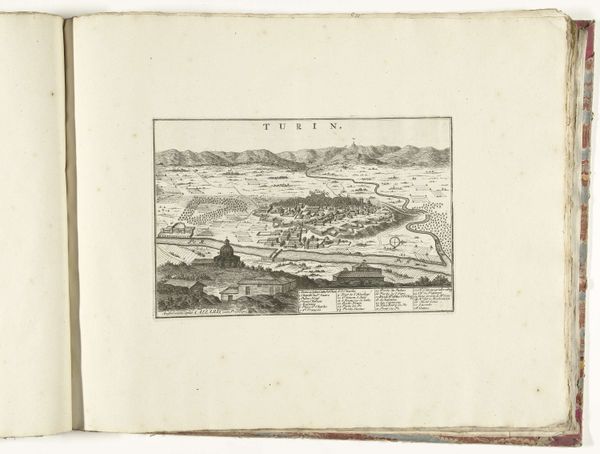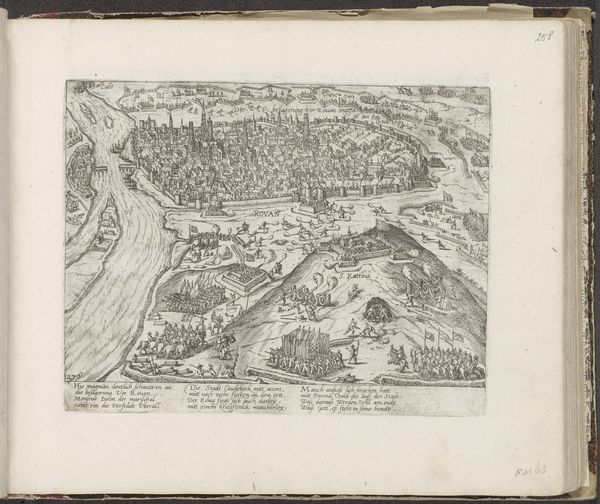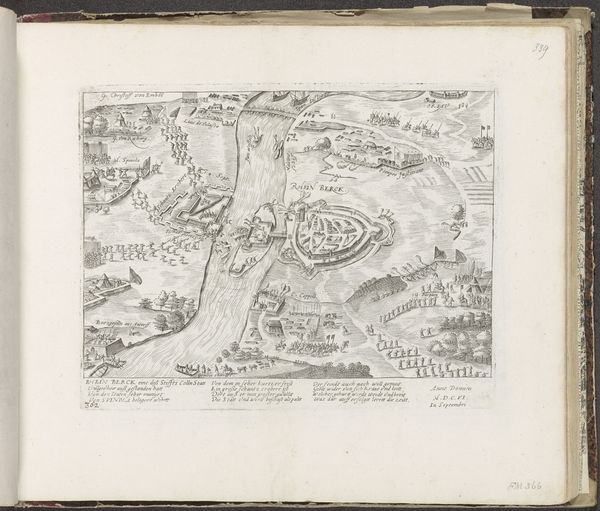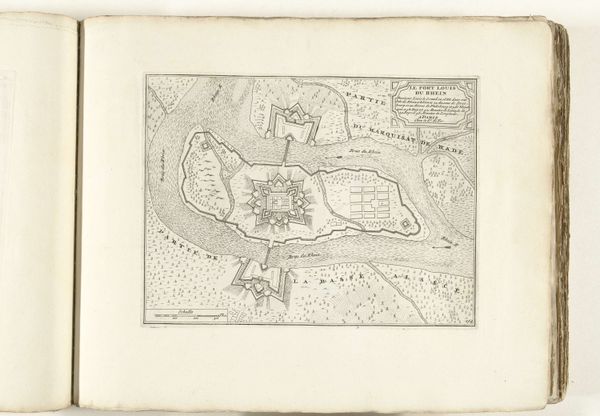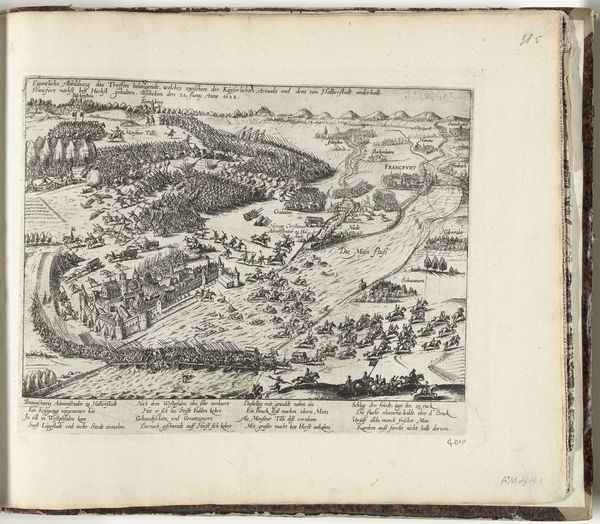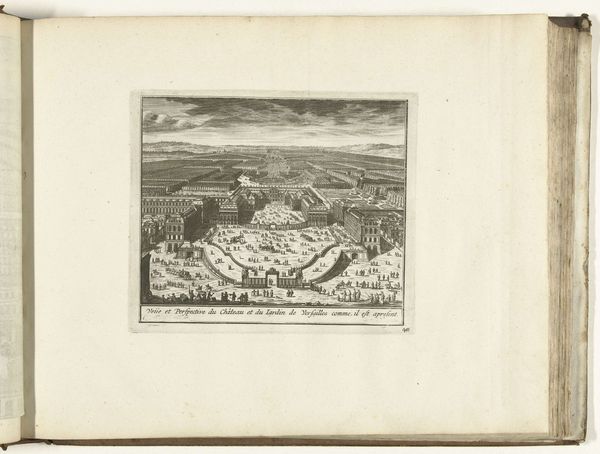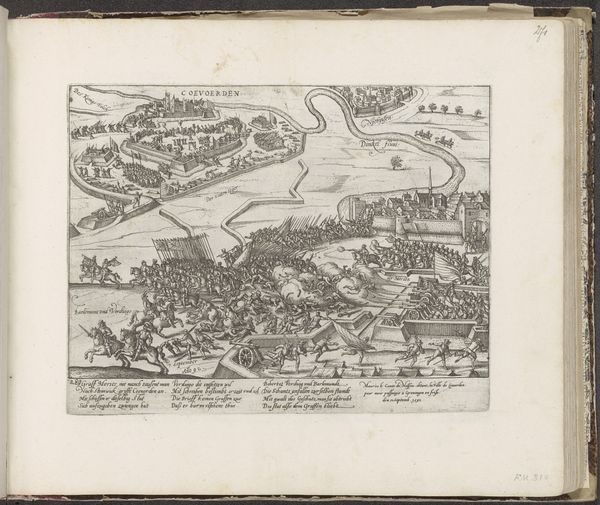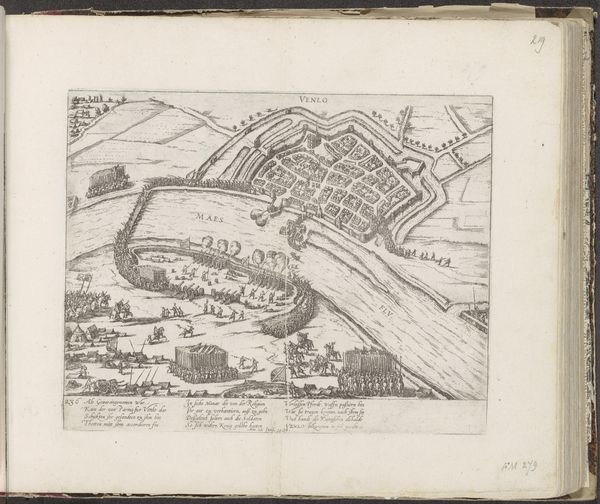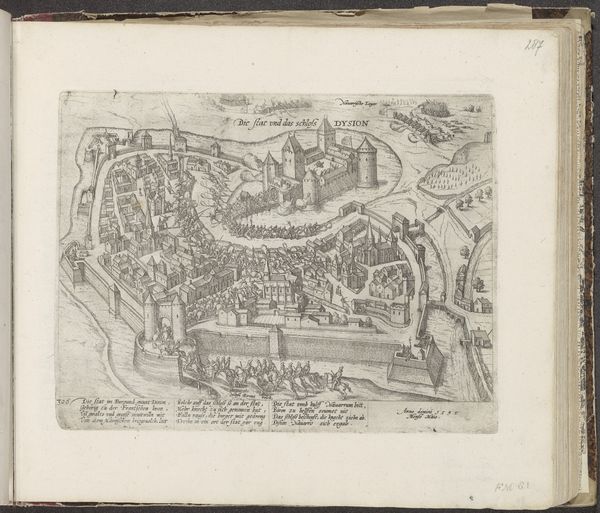
drawing, print, ink, engraving
#
drawing
#
baroque
# print
#
landscape
#
ink
#
cityscape
#
engraving
#
realism
Dimensions: height 171 mm, width 279 mm
Copyright: Rijks Museum: Open Domain
This print, "Gezicht op Novara," was made around 1702 by an anonymous artist using an engraving technique. The image is achieved by incising lines onto a metal plate, likely copper, in which the ink settles to produce the image. The fineness of the lines speaks to the engraver’s skill. It is important to consider what this image is actually doing. Rather than a landscape painting, it gives a bird's-eye view, depicting the city's layout with remarkable precision. This cartographic view shows the city’s walls, waterways, and the arrangement of buildings within. Each mark and line is important, documenting an inventory of urban space for strategic, administrative, or even propagandistic purposes. Engravings like this were crucial in disseminating information in early modern Europe. Consider the labour involved in creating such detailed images, and their role in shaping perceptions of distant places. By understanding the materials and processes, we recognize that even a seemingly straightforward image like this is deeply enmeshed with social and political contexts.
Comments
No comments
Be the first to comment and join the conversation on the ultimate creative platform.
